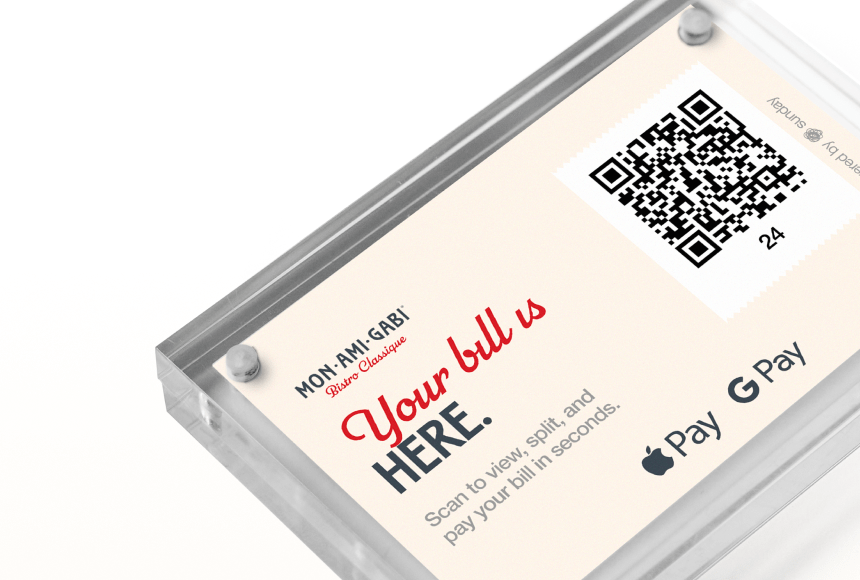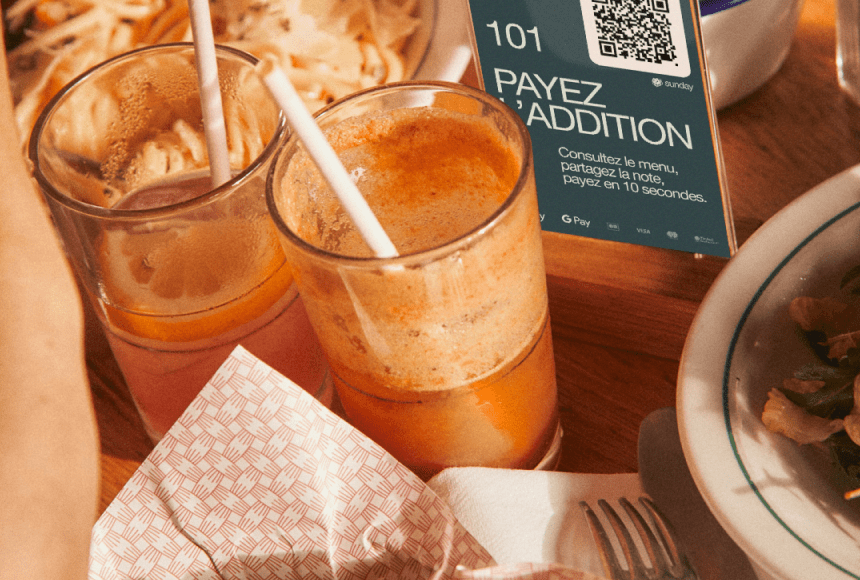
How to Avoid Stumbles When Launching a New Order & Pay Solution
Introduction: Setting the Table for Successful Technology Adoption
Picture this: guests arrive at your restaurant ready to enjoy a delicious meal. In a world that’s moving faster by the day, many of them take comfort in having contactless ways to browse the menu, place orders, and pay. Order & Pay technology—often involving QR codes at tables, mobile-friendly menus, or direct online ordering—can dramatically enhance the dining experience. As technology weaves seamlessly into our everyday lives, adapting your establishment to streamlined, digital processes is no longer a novelty; it’s an industry standard in the United States.
Yet, transitioning to Order & Pay solutions doesn’t come without its fair share of pitfalls. There are a few too many restaurant owners who have dived headfirst into upgrading their operations with these new tools—only to discover they’ve missed some critical steps along the way. By understanding the most common mistakes that haunt this process, you’ll be better equipped to avoid them and confidently roll out efficient, guest-friendly technology.
In this post, we’ll discuss the biggest errors restaurants make when implementing an Order & Pay solution, along with practical tips that help you serve up a seamless tech adoption that will benefit both your diners and your bottom line.
Overlooking Staff Training: You Can’t Serve What You Don’t Understand
One of the largest oversights when adopting Order & Pay tech is neglecting a comprehensive staff training plan. While technology might appear “user-friendly” on paper, your team—hosts, servers, bartenders, and managers—are the ones who must guide guests through the new process.
Take, for instance, Chef Linda, who recently introduced QR codes for seamless guest checkouts in her family-owned bistro. Linda assumed her staff would swiftly catch on. Instead, during the first week, confusion reigned. Servers had difficulty explaining to guests how to scan the code, place an order, and tip digitally. Some staff members feared the tech might threaten their jobs. Consequently, complaints started rising, wait times increased, and some loyal patrons expressed frustration.
Whether you’re implementing a user-friendly platform like sunday—where guests can scan a QR code to pay, tip, and even leave a review—or a custom solution built into your existing point-of-sale, your staff should feel confident in every aspect of the change. How can you ensure they’re fully prepared?
- Hands-On Training: Offer interactive demos and role-plfaying sessions, so your team has the chance to place orders themselves. This boosts familiarity and eliminates hesitancy.
- Clear Reference Material: Create simple cheat sheets or short how-to videos. Clear, concise instructions will go a long way when a flustered team member needs a quick refresher.
- Address Concerns Openly: If staff fear losing tips or see tech as a possible job threat, explain the ways technology helps everyone. For example, some solutions actually increase tip percentages because customers find it easier to select tip amounts digitally.
- Encourage Questions: Make sure managers are accessible for any clarifications employees might need. When team members feel heard, they become more engaged and supportive of the new system.
A well-trained, unified team can transform your restaurant’s digital shift into a far more appetizing experience for guests.
Failing to Align Digital and In-House Menus
Another misstep is not keeping your digital menus fully aligned with your physical (in-house) menus. Discrepancies—like missing specials, outdated pricing, or unlisted allergens—can cause confusion for customers. Some might wonder why a dish they saw online is no longer available, or worse, your staff might not know how to handle orders that appear on a guest’s phone screen but not on the in-house system.
Consistency is key when rolling out Order & Pay tech. Here’s why it matters:
- Customer Trust: Customers appreciate predictable menu options and pricing. If they catch errors, trust erodes, especially if they believe they’re being overcharged.
- Reduced Staff Burden: Confusion translates into more time spent by servers or managers clarifying details. Minimizing these hiccups frees your staff to focus on hospitality.
- Brand Reputation: A consistent menu signals professionalism, reliability, and an eye for detail. It’s a direct reflection of your restaurant’s identity.
Always double-check that your digital ordering platform, printed menus, and specials board match. If an unexpected shortage forces you to 86 an item, update your digital system as quickly as you would a physical chalkboard.
Underestimating the Guest Experience: Not Everyone Loves Tech
We live in a high-tech era, but that doesn’t mean everyone feels comfortable scanning QR codes from their phone. By focusing too heavily on the technology itself, you might overlook the reality that guests come from diverse backgrounds. Some people still want the personal touch of reviewing a menu with a server. Others may have older phones, limited data plans, or simply not be tech-savvy.
It’s wise to consider your audience. According to the National Restaurant Association, about 37% of diners say they want more technology options in restaurants, but that still leaves a portion who prefer traditional methods. Striking the right balance is crucial. To accommodate these ranges of preferences:
- Offer Options: Let diners pay and tip via QR code, but train your staff to handle more traditional transactions as well.
- Easy-to-Find Instructions: Provide a brief “how to” for scanning the QR code, ideally right at the table or on your website, so guests don’t have to guess.
- Maintain a Warm Welcome: Even with tech adoption, keep your approach personal. Greet guests, highlight specials verbally, and make sure they know you’re available if they need help with the new process.
Think of your new tech as an addition to your restaurant’s offerings—not a replacement for genuine human interaction.
Skipping the Marketing Moment: Market the Upgrade, Don’t Hide It
Rolling out a new contactless or digital solution is an exciting step. It shows that you’re ready to invest in a dynamic, modern experience for your patrons. Yet, one of the biggest mistakes owners make is launching technology quietly, hoping guests will discover it on their own.
Unfortunately, not everybody will spontaneously notice a small sticker on a table that says “Order & Pay Here.” More likely, many of your customers will continue with their usual routine—waving down a server or waiting for a printed check. This results in a missed opportunity to:
- Increase Efficiency: Once diners know how easy the new system is, they’re more likely to use it—reducing bottlenecks at the register or waiting times for checks.
- Gather Valuable Feedback: Digital solutions often allow for instant feedback or online reviews, which can boost your reputation.
- Enhance Brand Image: By proudly showcasing your new technology, you position yourself as a forward-thinking restaurant ready to adapt to guest needs.
Drive adoption by:
- Creating Eye-Catching Signage: Place tabletop signs with simple instructions and a quick explanation of the benefits (like skipping lines or paying at your own pace).
- Using Social Media and Website Updates: Let your customers know you’ve launched an improved, tech-friendly way to dine. Use short clips or images so your followers see how it works.
- Server Prompts: Coach your service team to mention the new system when welcoming guests or when dropping off meals, “If you’d like to pay or add items on your phone, feel free to scan the QR code.”
Neglecting User Feedback: The Calories of In-House Insights
What do your guests and staff think about your new Order & Pay system? Their perspectives should be the cornerstone of any improvement plan. Yet, many restaurateurs treat the initial rollout as a “one-and-done” process, forgetting to gather feedback once the technology is out in the wild.
Take the time to learn from the positive and negative remarks alike. If multiple diners mention that scanning the code felt glitchy or that menu categories were hard to navigate, there’s probably truth to it. If your staff complains they can’t see new orders pop up quickly enough, that feedback is gold.
Actively gathering feedback can be as simple as:
- Quick Surveys: Attach a short survey link at the end of the digital payment process. People often enjoy sharing ideas if the questionnaire is short.
- Open Staff Meetings: Dedicate a few minutes in team huddles each week to any comments about the new system—and address them.
- Check Social Media Reviews: Keep an eye on sites like Yelp, Google Reviews, or direct messages to see if customers are raving—or complaining—about the new process. Respond publicly and politely to show you value their input.
Implementing changes based on real-world feedback will keep your digital solution fresh, frictionless, and beloved by both staff and diners.
Relying on Subpar Internet or Unreliable Hardware
We’ve all experienced that moment when our phone struggles to load a page due to weak Wi-Fi or spotty cellular data. Now, imagine how awkward it becomes in a restaurant setting where a guest cannot load the digital menu or complete payment because your internet is slow or keeps dropping out.
Though it might be tempting to stick with your current internet plan to save on costs, stable connectivity is critical for digital ordering and payment solutions. Subpar internet or unreliable hardware introduces a variety of issues:
- Guests Abandoning the Process: If scanning a QR code takes too long, guests might give up and leave to find somewhere else with simpler, faster service.
- Transaction Errors: Interrupted transactions can lead to billing mistakes, charge duplicates, or lost payments.
- Staff Headaches: Servers might get stuck explaining technical failures or script errors, dampening morale and potentially losing tips.
A robust Wi-Fi network or reliable cellular backups, updated routers, and dependable payment devices are non-negotiable. It’s like using fresh ingredients in your signature dishes. You wouldn’t compromise there, so treat your technology with the same care.
Underestimating the Importance of Integration With Existing Systems
When rolling out an Order & Pay system, many restaurateurs fail to confirm that the new solution works seamlessly with their existing point-of-sale (POS) technology. System integration can involve everything from inventory management syncing, so your digital menu automatically updates with real-time availability, to ensuring tips and taxes are recorded correctly.
The Restaurant Technology News website frequently cites integration as one of the main challenges restaurants face when adding new digital tools. Poor integration often leads to employees having to “double input” orders or track sales manually, opening the door for errors and wasted time.
Look for solutions that are built to integrate with your existing POS or that come with robust APIs (application programming interfaces) to enable seamless communication between platforms. Testing is vital: place a few orders, watch them pass from the new system to the POS, and see if inventory is updated automatically. Make sure data flows in the right direction and that all numbers match.
Forgetting to Budget for Ongoing Maintenance and Updates
Order & Pay technology isn’t a static product. It evolves as your restaurant changes, as consumer needs shift, and as new software versions or hardware devices are released. If you only budget for the initial setup and skip planning for ongoing maintenance, you might be in for a nasty surprise down the road.
Your system may need periodic updates to remain compliant with payment regulations, to fix bugs, or to introduce new features that keep you on the cutting edge. Think of these updates as taste tests in your kitchen—ensuring your remodel continues to run smoothly. By planning for routine checkups, you reduce the risk of sudden outages or major system failures.
Plus, scheduling regular check-ins with your tech provider solidifies your partnership. You learn about the latest improvements, and they get your valuable feedback to enhance future iterations. This cycle of advancements can help you stand out in a competitive market.
Using Technology to Replace Hospitality Instead of Enhancing It
While digital solutions can streamline operations, the heart of the restaurant experience still revolves around people, ambiance, and the artistry of good food. Order & Pay tools should free up your staff’s time from mechanical tasks, allowing them to put more energy into warm greetings and personalized service.
When introducing any new tech:
- Maintain Genuine Interactions: Encourage staff to engage with customers about the day’s specials. They can still recommend that awesome dessert pairing, just without the clumsy downtime of manually ringing items into a legacy POS system.
- Keep Service Friendly and Personal: Technology shouldn’t turn your restaurant into a self-service fast-food joint. It’s one thing to offer convenience; it’s another to completely lose that personal touch.
- Empower Guests with Choices: Some guests love the digital approach, while others want to talk through their decision with a knowledgeable server. Let them pick what suits them best.
In short, make sure your staff remains the main ingredient. Technology is just the garnish that elevates the overall dining experience.
Real-Life Case Study Revisited: Chef Linda’s Turnaround
Remember Chef Linda’s bistro, which encountered confusion during the first rollout? Here’s how she snapped back:
- She revisited training, making it part of a weekly routine. Linda even incorporated friendly competitions among servers to see who could engage the most new users with the digital menu.
- She aligned every version of her menu—digital, printed, and the specials board—making it easy for guests to confirm that newly launched dishes were indeed available.
- Linda also made her tech solution more visible by adding table tents with a few words about the seamless payment experience and short instructions on scanning QR codes.
- After hearing from staff that some older patrons struggled with the process, she introduced a dual approach where servers offered either the digital method or the traditional approach. That small gesture made everyone feel more welcome.
- She integrated the new system directly into her existing POS, double-checking that receipts, tips, and even loyalty reward programs synchronized without a hitch.
By addressing these mistakes—and making staff feel part of the upgrade instead of sidelined by it—Linda turned her upgraded technology into a signature piece of her hospitality. The result: fewer complaints, an uptick in revenue, and even better online reviews.
Where Do You Go From Here?
Stepping into the digital era by offering an Order & Pay solution in your restaurant shouldn’t keep you up at night. On the contrary, it holds tremendous potential to streamline operations, boost average check sizes through add-ons, and develop deeper relationships with your diners through digital offerings—like easy tipping and simple access to promotional deals.
Avoiding common pitfalls is largely about preparation and an honest look at the unique circumstances of your restaurant. Train your team well, keep your menu consistent, provide multiple choices for guests, and ensure technical reliability. Keep an ear open for feedback. Cook up the perfect blend of technology and hospitality that resonates with your audience.
You don’t have to do it all alone. There are solutions like sunday that make adopting Order & Pay technology simpler—empowering you to provide efficient, contactless ways for guests to settle their bills, leave a tip, and even leave a review with minimal fuss. The secret ingredient? You, your team, and a willingness to learn each day. By embracing these best practices, you can keep your restaurant humming with satisfied customers and a staff that truly feels your warmth.
Find out more today
Drop us your details below and we’ll reach out within the next 24h




